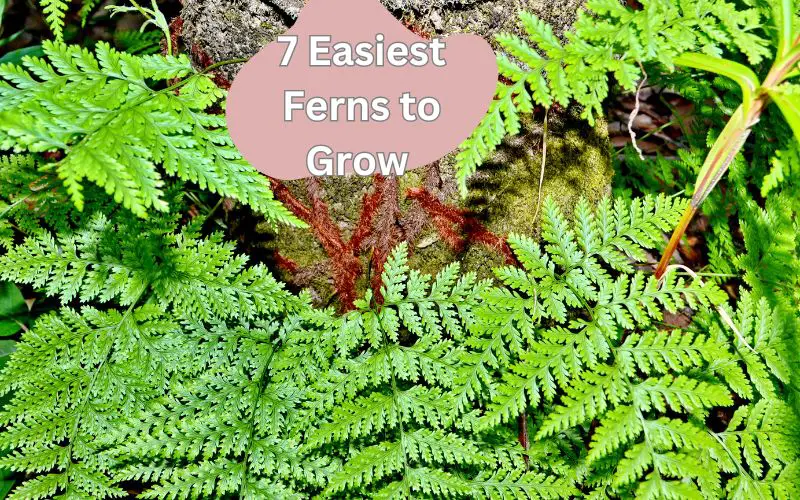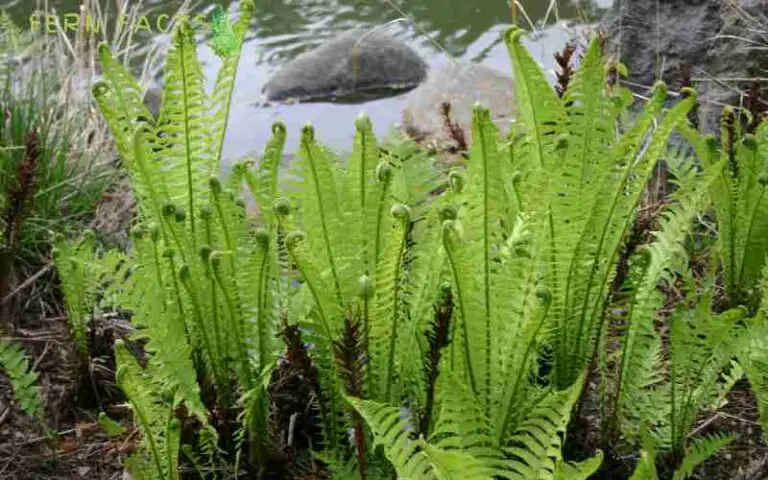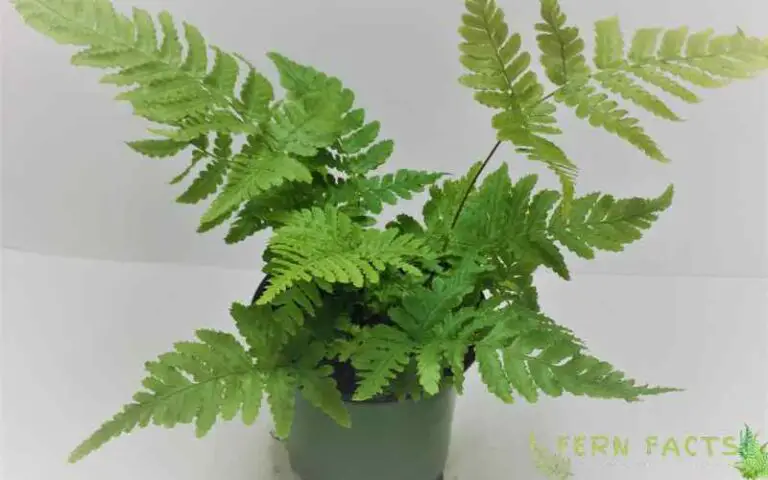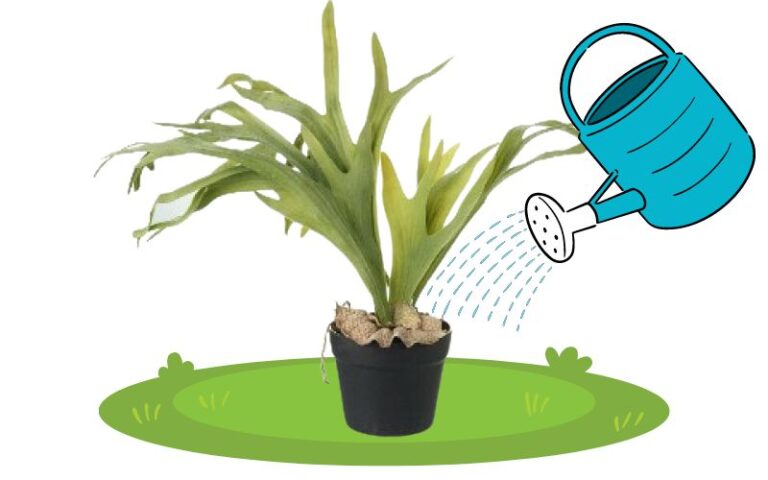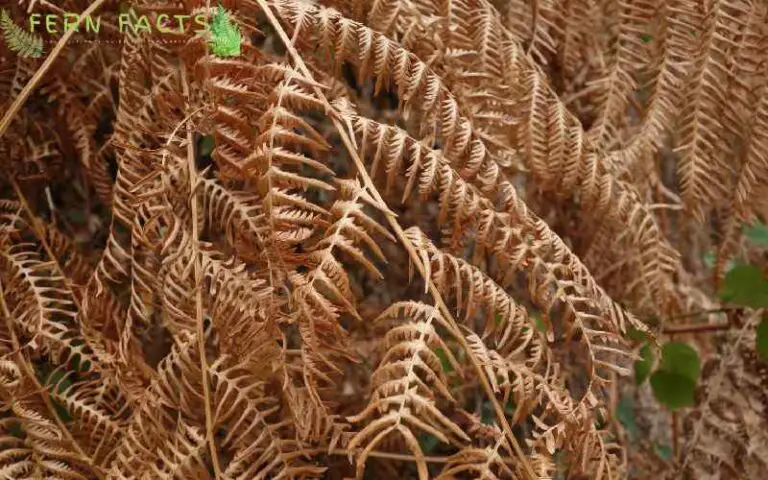7 Easiest Ferns to Grow
Wondering about growing ferns? But! You don’t know which ferns will be the easiest ferns to grow. Well, in general, ferns are easy and low-maintenance plants, which will signify ornamental plants to fill the house with their lush greenery appearances.
So, if you are looking for plants that will be easiest ferns to grow then this article will take you to the right place. Here, this article will give you a list of 7 easiest ferns to grow along with their characteristics.
This will help you understand their general characteristics so that you can grow these ferns in your house without much effort.
So, let’s start the topic.
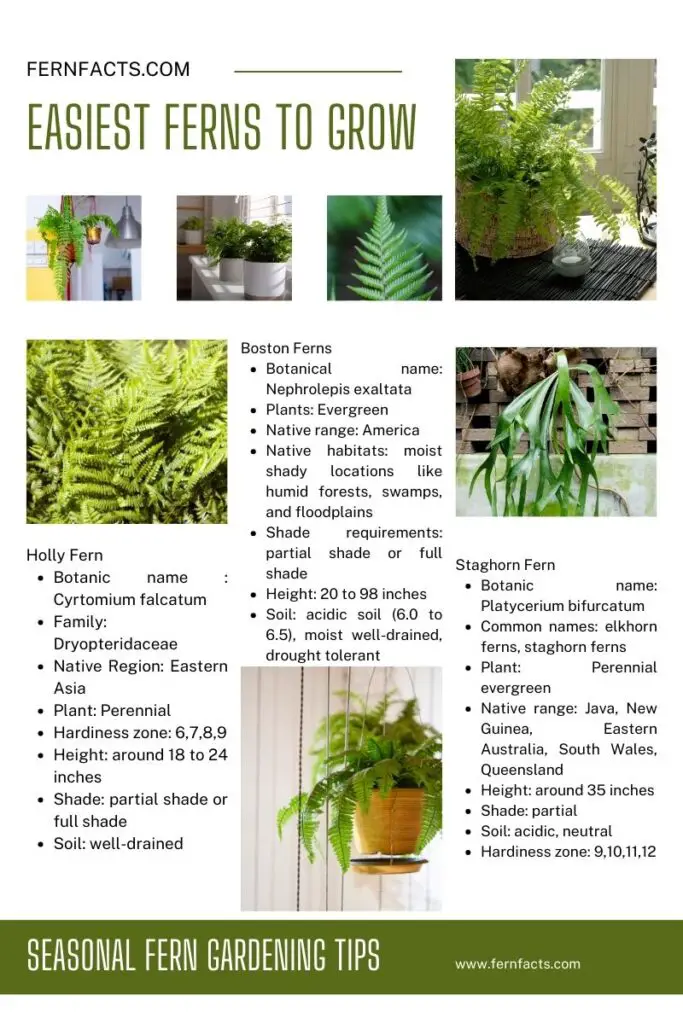
7 Most Prominent and Easy Growing Ferns
If you are a beginner-level fern lover, then these 7 easy-growing ferns would be best for you to grow in your initial days of planting. Here are those ferns list:
1. Holly Fern
- Botanic name : Cyrtomium falcatum
- Family: Dryopteridaceae
- Native Region: Eastern Asia
- Plant: Perennial
- Hardiness zone: 6,7,8,9
- Height: around 18 to 24 inches
- Shade: partial shade or full shade
- Soil: well-drained
Japanese Holly ferns are the most familiar evergreen ferns and also very easy growing ferns for you to grow in your house.
These ferns are known as house Holly ferns, belonging to the wood family of Dryopteridaceae. Because of their glossy dark green lush appearances of holly branches, they become one of the popular species to have as indoor plants.
This Holly fern has 35 different varieties or species in East Asia, including those native to Eastern Asia, such as China, Korea, Taiwan, Vietnam etc. Since their native habitats are coastal cliffs, banks of streams, rocky slopes, and other moist, stable places therefore, they prefer moist and well-draining soil to thrive and grow.
Additionally, they need full or partial shade to grow properly. They can even survive in low light conditions however, you should have given them some sort of indirect brightness where they can bloom.
Their ideal temperature would be 50°F; however, they can adapt themselves to a room temperature of 68°F as well.
They also don’t grow flowers and are fragrance-free. Besides, they are nontoxic plants to animals, which means they are not harmful, especially cats and dogs.
So, if you have pets at home, you don’t need to worry much, as they are nontoxic plants.
Read More About: Are Ferns Invasive?
2. Boston Ferns
- Botanical name: Nephrolepis exaltata
- Plants: Evergreen
- Native range: America
- Native habitats: moist shady locations like humid forests, swamps, and floodplains
- Shade requirements: partial shade or full shade
- Height: 20 to 98 inches
- Soil: acidic soil (6.0 to 6.5), moist well-drained, drought tolerant
Boston Ferns are another evergreen growing ferns to grow both indoors and outdoors. Although their average height is around 40 to 60 centimeters, they can grow up to 1.5 meters in extreme cases.
Some popular subspecies, such as Florida Ruffled fern (fluffy ruffled fronds), Golden Boston (golden leaves), Fluffy Duffy(dense, fine-textured), and Tiger fern (colorful yellow-greenish fronds in sunlight), can be planted in your house.
All of the species are fond of moist shady places for their natural habitats.
Their soil can also tolerate drought; however, you need to mist these plants if the humid conditions drop below 80%.
Try to balance the humidity otherwise, the colorful Boston ferns will fade away for the time being and will look dull and gloomy in your garden.
3. Staghorn Fern
- Botanic name: Platycerium bifurcatum
- Common names: elkhorn ferns, staghorn ferns
- Plant: Perennial evergreen
- Native range: Java, New Guinea, Eastern Australia, South Wales, Queensland
- Height: around 35 inches
- Shade: partial
- Soil: acidic, neutral
- Hardiness zone: 9,10,11,12
Staghorn Ferns are perennial evergreen ferns that have 17 different species in Asia and Australia currently existing including Java, New Guinea, South Wales, Queensland, and Lord Howe Island.
Their deer or elk-like antlers with heart-shaped arching fronds are a great addition to your house as indoor as outdoor plants.
These ferns are also very frequent plants to grow and plant as home cultivation by very cultivators. So it can be one of the most easy and low maintenance ferns for you to have in your garden or in your house.
You can create exact tropical environments for your staghorn fern to thrive in, where they will get subtropical natural environments such as a dappled atmosphere, moisture, and indirect sunlight. Since they are quite invasive plants, they can be good for your garden cover.
You can also grow them in baskets or pots, but you must prune them monthly to avoid their invasive characteristics.
Silver staghorn ferns or elkhorn fern: (P. veitchii ), Stiff or green staghorn fern (P. hillii), American or Blake staghorn fern: ( P. andinum), Crown staghorn fern: (P. coronarium), Triangle staghorn fern: (P. stemaria) and Elephant ear staghorn fern (P. elephantosis) are one of the popular varieties staghorn ferns to grow and plant in your house easily.
4. Bird’s Nest Ferns
- Botanical name: Asplenium nidus
- Plants: evergreen
- Native range: southeastern Asia, eastern Australia, Hawaii, India and eastern Africa
- Shade requirements: partial to full shade
- Height: around 1 m
- Soil: alkaline or neutral, moist and well drained
Bird’s nest ferns are evergreen ferns with broad fronds and are another great easiest ferns to grow at your house as both indoor and outdoor plants.
These ferns are also ornamental plants that have been used to decorate landscapes or houses over time. Their fronds are almost similar to banana leaves.
However, some varieties, like crispy wave bird’s nest ferns, Osaka ferns, and crow’s nest ferns, have almost similar resemblances.
Also, this fern stands out for its easy-to-manage diseases, making it a hassle-free addition to your plant collection.
These plants are very frequent in southeastern Asia, eastern Australia, Hawaii, India, and eastern Africa for you to observe.
These nest fern plants also require partial or fully shaded places with warm and humid places to flourish.
As they are evergreen plants, they will have fronds throughout all the seasons of the year and will have a greenery appearance in your house.
5. Japanese Painted Ferns
- Botanical name: Athyrium niponicum
- Plants: Deciduous
- Native range: eastern Asia, China, Japan, and Korea
- Natural Habitats: lowlands
- Shade requirements: partial shade
- Height: around 0.5 meter
- Soil: acid, neutral, alkaline, moist and well-drained
The Japanese painted ferns are some of the prettiest ferns to have in your garden or in your house. Their eye-catching beauty will hold the elegant classy looks around them.
Their delicate, colorful pattern fronds with green foliage are the best option for planting both indoors and outdoors.
They have unique fronds with a mixture of silver, green, or purple that look stunning in bright light or sun rays. This gives them a metallic shine.
So their coloration will enhance your house look. These Japanese painted ferns also received many garden merit awards from the Royal Culture Society.
These awards also represent their beauty and elegance in nature which will be passed on from generation to generation.
6. Rabbit’s Foot Fern
- Botanical name: Davallia
- Plants: evergreen
- Native range: fiji Islands, Oceania
- Native habitats: n/a
- Shade requirements: Partial
- Temperature: 70 to 75 F
- Height: around 1 meter
- Soil: acid, neutral, moist, and well-drained
These rabbit’s foot ferns are another easy fern to grow in your house. You can plant them both indoors and outdoors, as per your choice and place requirements.
These ferns have intricate fronds with brown furry rhizomes, giving them a unique, admirable look for nature enthusiasts. Like most other plants, they also need minimal care and maintenance to thrive and grow.
Since they also prefer dappled or indirect sunlight, you can place them as houseplants inside your house or in a partially shaded location where they will get indirect bright sunlight.
Additionally, they will need a humid atmosphere with 70 to 75°F temperatures around themselves.
Common species of rabbit foot ferns like the deer’s foot ferns (Davallia canariensis) and the squirrel’s foot ferns (Davallia trichomanoides) are one of easy growing plants to grow without much effort.
7. Cinnamon Fern
- Botanic name: Osmundastrum cinnamomeum
- Common name: Cinnamon Fern
- Natural range: America, Asia
- Natural habitat: bogs, moist woodlands, swamps
- Plant: Perennial
- Soil: acidic soil, clay, sand, well-drained, moist
- Light: full to partial shade
- Height: around 1 to 3 ft
- Width: around 2 to 3 ft
- USDA Zone: 3-9
Cinnamon ferns are a further option for you to grow as easy growing ferns in your house. Their bright green color, foliage texture, and softness will manifest wildlife in your mini house garden.
These ferns have densely matted wiry roots, mostly native to America and eastern Asia, along with their natural habitats being woodlands, bogs, and swamps.
They existed more than 70 million years ago which makes these ferns one of the oldest ferns ever. They generate their breeding by producing spores.
Their spores can grow within a couple of weeks. Since they are deciduous plants, they will grow and shine all the summertime, and turn yellow in the winter seasons before dying. These Cinnamon ferns have also been used by First Nation tribes as a food source.
Similarly, these ferns are giving their contribution to medical purposes like cold remedies, gynecological issues, and snake bites as well from the ancient time period. So it will be great medical plants for you to have in your house.
Summing up
In a nutshell, ferns are the most easily accessible and growing ferns for anyone to have. They can fill your house with their lush foliage.
Ferns like Holly Fern, Boston Fern, Staghorn Fern, bird’s nest fern, Japanese painted fern, Rabbit’s Foot fern, and Cinnamon fern are the easiest to grow indoors and outdoors. By planting them in your house, you can enjoy the beauty of wilderness with your mini garden plants.

